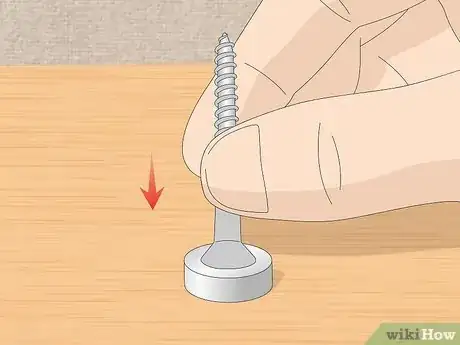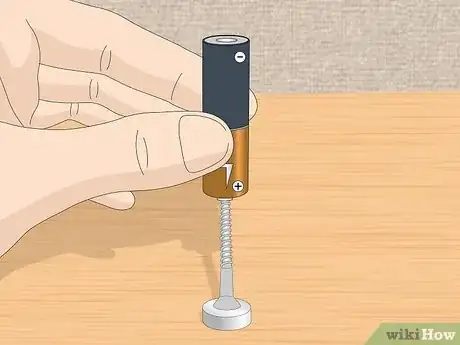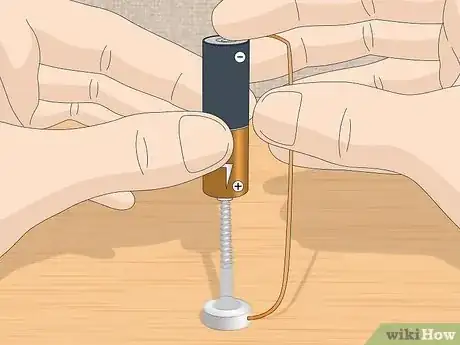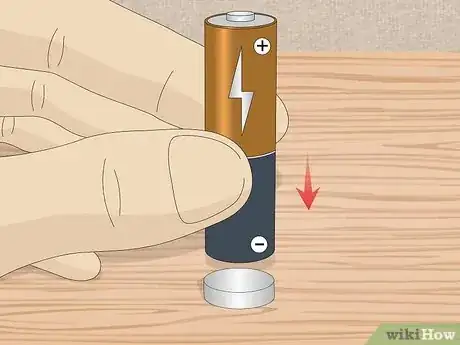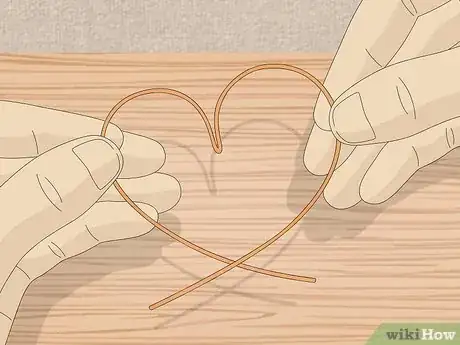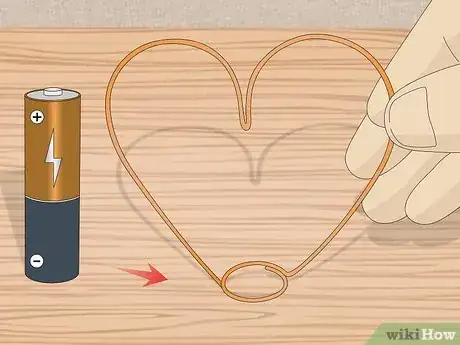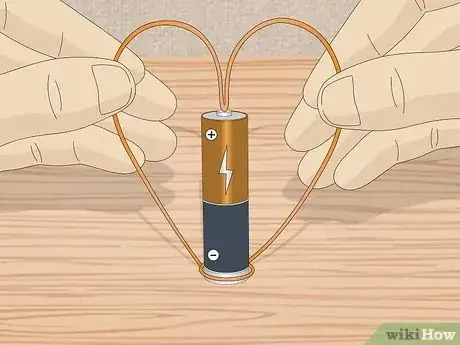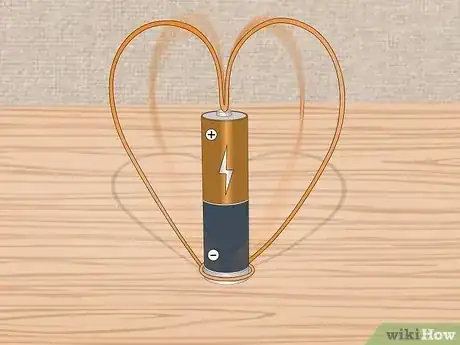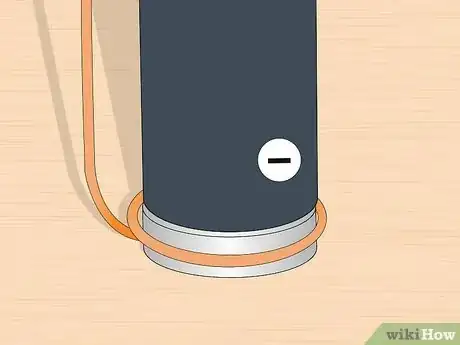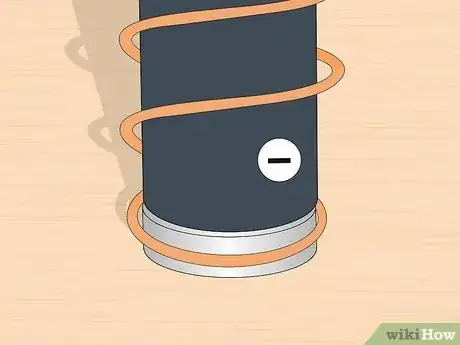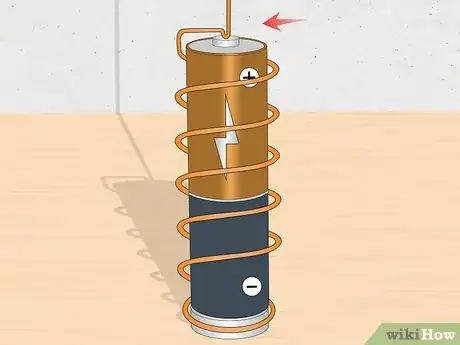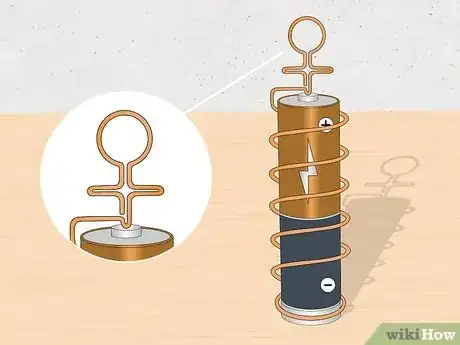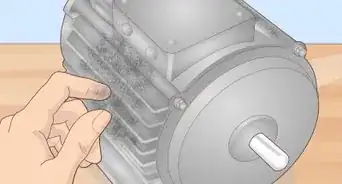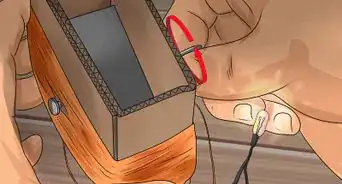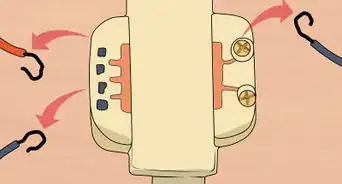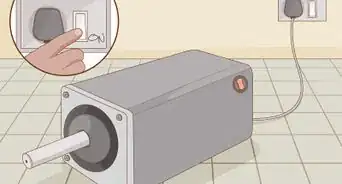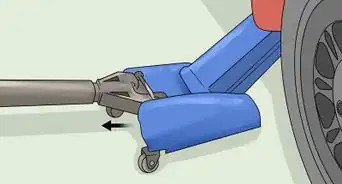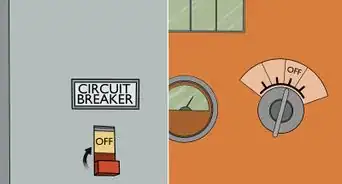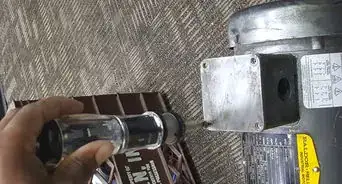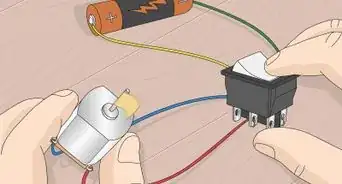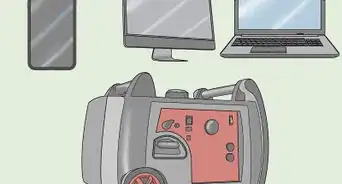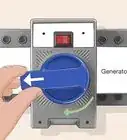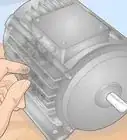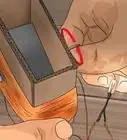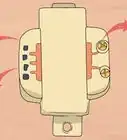This article was co-authored by wikiHow Staff. Our trained team of editors and researchers validate articles for accuracy and comprehensiveness. wikiHow's Content Management Team carefully monitors the work from our editorial staff to ensure that each article is backed by trusted research and meets our high quality standards.
There are 7 references cited in this article, which can be found at the bottom of the page.
wikiHow marks an article as reader-approved once it receives enough positive feedback. In this case, 100% of readers who voted found the article helpful, earning it our reader-approved status.
This article has been viewed 97,054 times.
Learn more...
A homopolar motor is a simple electric motor with two magnetic poles. They were first invented in the 1800s and have no significant practical application today, but can be useful for the demonstration or understanding of how electrical currents and motors work. Building your own homopolar motor is fun and easy, but does require caution. Never use any magnets weighing more than more than an ounce; doing so puts you at risk of pinching your hand or crushing the battery. The homopolar motor offers limitless opportunities for creativity -- almost any symmetrical copper wire shape you can imagine can be adapted as a homopolar motor design.
Steps
Making a Basic Homopolar Motor
-
1Prepare the materials for the motor. You’ll need a neodymium magnet, a wood screw, a spool of thin-gauged (1.3 millimeter / 16 gauge) copper wire, wire cutters, needle-nose pliers, and a AA battery. Ensure you’re using wire which is uncoated, nonmagnetic, and somewhat pliable. Coated copper wire is generally made of multiple thin copper filaments woven into a rope-like wire. This type of wire is too weak to maintain a bendable shape, a quality which you’ll want it to have later.
- The magnet should be a flattened cylinder with a diameter no larger than about one centimeter. Be careful not to let small children play with the magnet. Also, do not place it on or near electronics equipment, including tablets, phones, or MP3 players.[1]
-
2Place the head of the screw on the magnet. In other words, the point of the screw should be sticking straight up from the magnet, whose flat head is affixed to the magnet. The head of the screw should be perfectly centered on the magnet, with an equal amount of space along the entire perimeter between the edge of the magnet and the edge of the screw’s head.
- If you want to adjust the position of the screw on the magnet, you should be able to slide it around. If you want to use another screw for some reason (or suddenly realize you need to hang up a picture with the screw), try pushing it off the magnet rather than trying to pull it straight out.
Advertisement -
3Hold the AA battery’s positive end (the one with the divot extending out) just above the sharp point of the screw. Pinch the battery between your thumb and middle finger. Lower the battery onto the screw so that the point of the screw makes contact with the approximate center of the battery’s positive pole. The battery should now be above the screw, which should be above the battery, in a vertical line.
-
4Complete the circuit. With your free hand, bring one end of the copper wire up to the negative pole (the flat end) of the battery. Pinch the wire in place on top of the negative pole with your index finger. Bring the other end of the copper wire down to the battery and make contact with it. The nail and magnet assembly should spin.
- You may hear a low hum or buzz when the circuit is complete.
- If it does not spin, try reversing the polarity of the magnet by removing the screw, turning the magnet over, then reattaching the screw.
Making a Hands-free Homopolar Motor
-
1Place the neodymium magnet on the flat end of the battery. A neodymium magnet is a rare-earth magnet made of neodymium and is extremely strong. Apply your magnet carefully to the bottom of the battery. Place the battery/magnet assembly on a flat surface.[2]
-
2Bend your wire into a heart shape. Measure the whole height of the battery/magnet assembly. Obtain a heart-shaped template from a coloring book or print one from your computer. Lay the template on a flat surface. Find the center of your copper wire and place it over the point from which the acute angle of your heart template radiates. From there, the wire should curve up and away from the central point before swooping back down towards the base of the battery.[3]
-
3Use the measurements of the battery/magnet assembly to adjust its shape. Ensure that the central point of the wire heart will sit on the positive pole and the bottom will close around the magnet. The two ends of the wire should close around the battery on either side, forming a closed loop. The wire should touch the sides of the battery without pinching it so tightly that movement of the wire around the battery is limited or impossible when it starts spinning.[4]
-
4Make small adjustments to the heart-shaped wire you’ve crafted. Fine-tuning the wire shape may require repeated sessions of placing it on the battery/magnet assembly, checking for symmetry and balance, and widening or tightening the loop formed by the two “arms” of the heart which meet around the base. Ensure the loop around the magnet does not come into contact with the table; if it does, it will cause friction which impedes the speed and efficacy of your homopolar motor.
-
5Start the motor. Once your wire shape is ready, you can set it on the positive pole of the battery. Watch the wire shape spin round & round.[5] If you’re in a relationship, this homopolar motor design functions as an easy DIY romantic gift.
Making a Ballerina Homopolar Motor
-
1Begin by making a loop which fits around the magnet. Just like the heart-shaped copper wire, this homopolar motor uses a simple AA battery sitting atop a neodymium magnet in a vertical position with its positive pole oriented above the negative pole. Loop some copper wire around the magnet. You need not make the whole loop touch the base; an ovular loop which touches the battery at just two points is as acceptable as a circular loop which grips the whole magnet.
-
2Twist the wire up into a semi-corkscrew. Once the loop around the base is complete, bend the wire up and away from the loop around the magnet. The corkscrew’s diameter should be just a few millimeters wider than that of the battery. Stop the corkscrew about halfway up the length of the battery.
-
3Change the wire’s direction into a perfectly vertical line. At a point about three millimeters above the highest point on the battery, press the wire inwards at a ninety degree angle toward the center of the positive pole. Once the wire is over the positive pole’s central divot, bend it down so that it touches the divot, then races back up and away from the divot in a hairpin turn.
-
4Make a tiny dancer.[6] Instead of a heart shape, bend the copper wire into the shape of a ballerina, arms outstretched. Begin by turning the wire, now pointing straight up, in a ninety degree bend about one and a half inches above the positive pole of the battery. Approximately one centimeter along this length, pull the wire into a hairpin turn, angling it back toward the ninety degree turn you just made.
-
5Angle the wire up in a ninety degree turn and pull the wire into a roughly circular shape about the size of a nickel. This will be the dancer’s head. Once on the other side of the dancer’s “neck,” bring the wire back down on the other side of the dancer, mirroring the bends you just made. You should end up with a “T” shape with a circle above the central junction. You cannot end where you began, though (touching the central divot on the positive pole of the battery), and so will need to clip the wire at a point about half a centimeter above the positive pole of the battery.
- It may help to use a template or outline you’ve drawn or printed from the internet when shaping the wire into the ballerina form. You can print the ballerina outline or template, then lay the wire over it, bending along the outline to get the desired shape.
Community Q&A
-
QuestionCan I use a normal magnet?
 Community AnswerYes, but it wont spin as fast, it spins its fastest with neodymium magnet.
Community AnswerYes, but it wont spin as fast, it spins its fastest with neodymium magnet. -
QuestionCan you use any type of magnet?
 Community AnswerYes, but neodymium magnets are best because they are strong, and the stronger the magnet, the faster it spins.
Community AnswerYes, but neodymium magnets are best because they are strong, and the stronger the magnet, the faster it spins. -
QuestionHow do I get a neodymium magnet?
 Community AnswerOrder on Amazon, that is where I got mine. Search for neodymium magnets and make sure it is the right size.
Community AnswerOrder on Amazon, that is where I got mine. Search for neodymium magnets and make sure it is the right size.
Things You'll Need
- One neodymium magnet
- One wood screw
- A spool of thin-gauged (1.3 millimeter / 16 gauge) copper wire
- Wire cutters
- Needle-nose pliers
- One AA battery
Warnings
- Disconnect the copper wire to magnets and battery if the motor doesn't rotate so that you don't risk burning the battery.⧼thumbs_response⧽
- Do not use lithium or rechargeable batteries, or leave unattended.⧼thumbs_response⧽
- Never use any magnets weighing more than more than 1 ounce; doing so puts you at risk of pinching your hand or crushing the battery.⧼thumbs_response⧽
- Use caution. The homopolar motor can put out a lot of energy in the form of heat. Do not let it spin too long or your hand will burn.[7]⧼thumbs_response⧽
- Never let any children touch the magnets you use in the experiment.[8]⧼thumbs_response⧽
References
- ↑ https://babbledabbledo.com/steam-project-tiny-dancers-homopolar-motor/
- ↑ https://frugalfun4boys.com/build-simple-electric-motor/
- ↑ https://learning-center.homesciencetools.com/article/make-spinning-wire-motor/
- ↑ https://learning-center.homesciencetools.com/article/make-spinning-wire-motor/
- ↑ http://www.waynesthisandthat.com/How%20to%20Build%20a%20Homopolar%20Motor.html
- ↑ https://babbledabbledo.com/steam-project-tiny-dancers-homopolar-motor/
- ↑ http://www.animations.physics.unsw.edu.au/jw/homopolar.htm
- ↑ https://www.sciencebuddies.org/science-fair-projects/project-ideas/Elec_p065/electricity-electronics/use-super-strong-magnets-to-make-a-simple-motor#procedure

